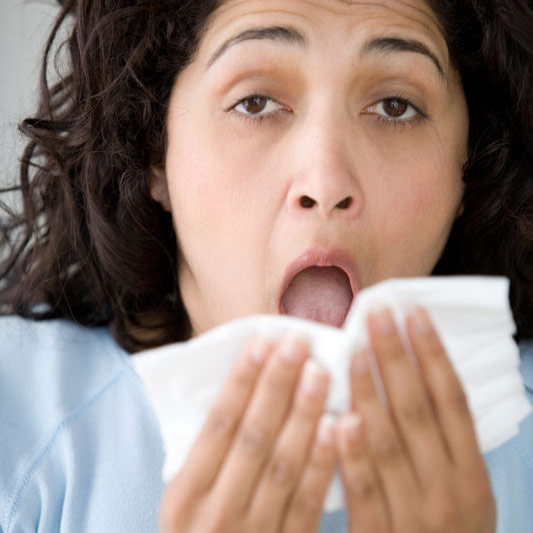
WEDNESDAY, Sept. 26 (HealthDay News) — Actress Julie Bowen, awarded her second Emmy Sunday for her role in the hit TV comedy “Modern Family,” starts a more serious role today: raising awareness about life-threatening childhood allergies.
The two-time best supporting actress in a comedy series and mother of three knows firsthand about potentially fatal allergic reactions (anaphylaxis). Her oldest son, Oliver Phillips, was 2 years old when he developed anaphylaxis in reaction to the double-whammy exposure of a bee sting coupled with a bit of peanut butter.
“We had no reason to suspect we might have a problem. He had had peanuts before. And he had always been fine,” the Baltimore native explained. “But then one day we found out that, no, he’s not.”
Almost immediately, Oliver’s face swelled dramatically. Other symptoms of anaphylaxis include chest pain; hives; breathing difficulties; tightening of the throat; lip and tongue swelling; nausea; dizziness and fainting.
Bowen’s husband, Scott Phillips, who was at home with the toddler, “was terrified,” she said. “He knew it was bad.” Oliver was rushed to the hospital and immediately given an injection of epinephrine (adrenaline), she said.
Epinephrine is used for the emergency treatment of anaphylactic reactions that can follow exposure to allergens such as peanuts, walnuts, shellfish, bee stings, medications and/or latex.
Although any child can develop an allergy, or abnormal immune response, they are more likely to occur in people whose family members also have allergies.
Bowen now is spearheading the nationwide awareness campaign with the help of Mylan, the pharmaceutical company that makes an epinephrine-loaded delivery device called the EpiPen.
“The goal is education,” said Bowen. “We, as parents, can’t always be with our children all day, every day. So we want the people around them to be educated.”
Oliver, now 5, made a full and quick recovery. “Once he had the proper medicine, it was a very quick process,” she noted. “But today we always carry epinephrine with us wherever we go.”
Food allergies are the leading cause of anaphylaxis. The U.S. Centers for Disease Control and Prevention (CDC) estimates that food allergies in children have increased 18 percent since 1997. More than 9,000 children are hospitalized because of severe food allergies each year.
Many allergic reactions occur when children accidentally consume foods they’re allergic to at school. And as many as one-quarter of anaphylaxis reactions at school occur in students with no history of food allergies, the CDC says.
Bowen said, for her, the take-home message is clear: When it comes to childhood allergies you just never know.
“I’m not a doctor, but I know that for a lot of people it can start off less dramatically,” she cautioned. “But the problem can progress . . . Reactions that start out small can get stronger. It’s an individual thing.”
Parents and school employees shouldn’t dismiss a child’s complaints, she noted. “We want parents and teachers to know the signs, so that if you see them coughing, scratching at their throat some, or that they’ve got some rash, that you go ahead and look into it further,” she said.
If you suspect your child may have an allergic reaction to anything, get it checked out. “Call 911 if necessary and get medical attention immediately,” she added. “Because there’s no way to guarantee that your child is never going to have an anaphylactic reaction.”
Dr. Carla Davis, an assistant professor of pediatrics in the section of immunology, allergy and rheumatology at Texas Children’s Hospital in Houston, seconds that point.
“She is correct, in that we don’t have a good way to predict who’s going to develop anaphylaxis,” Davis said. “There are some new tests with the potential to help people know who might be at risk, but these are not 100 percent accurate.”
The odds are not insignificant, “given that one to two children in each classroom could potentially be at risk for a serious food allergy,” Davis said. Of those, 30 to 40 percent would be at risk for life-threatening anaphylaxis, she noted.
Epinephrine is a very simple treatment that is underutilized, she added. “Many people don’t know that it’s the first-line treatment, and caregivers must act quickly in order to treat effectively,” Davis said.
How quickly? Ideally, within minutes of the child developing a reaction, followed by continued monitoring in an emergency room setting for secondary reactions, Davis said.
More information
For more on anaphylaxis, visit the Food Allergy & Anaphylaxis Network.

